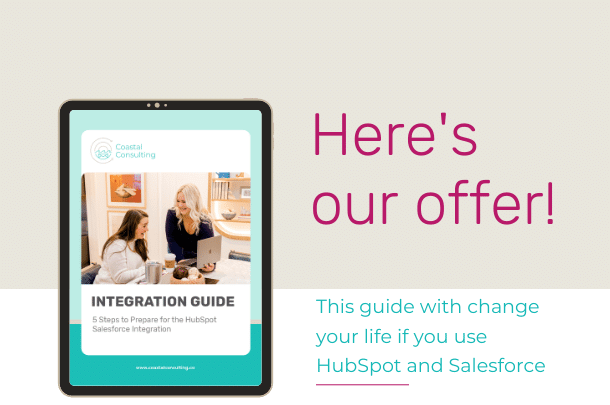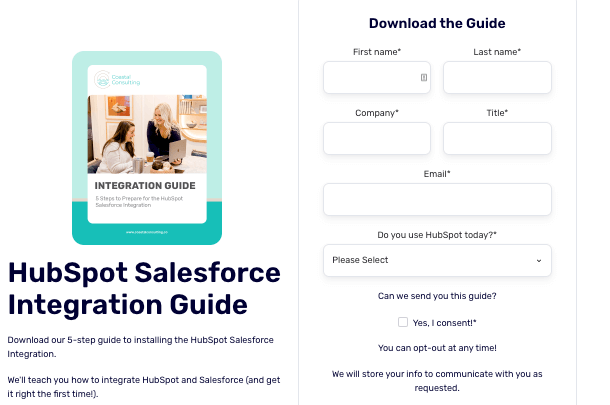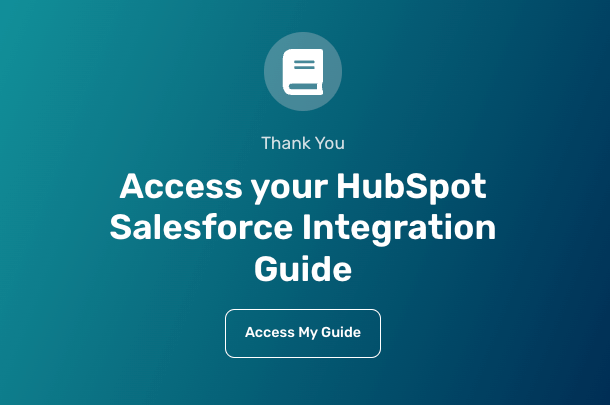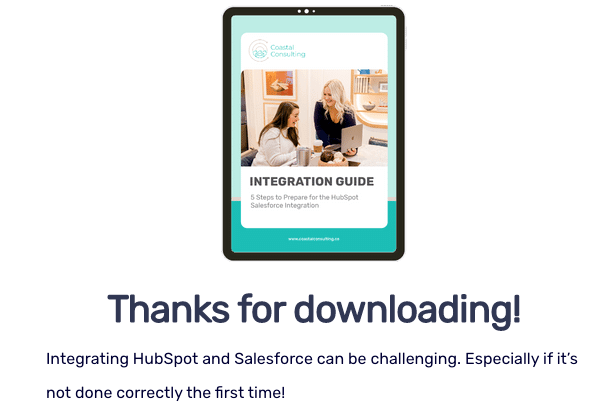Share this
How to Develop a Content Offer and Lead Conversion Path
by Lauren Ryan on February 2022
What is a conversion path?
A conversion path is a journey you design for a person to convert to a lead (and potentially a customer) for your organization. Conversion paths are a core element of your overall lead acquisition strategy.
A well-designed conversion path has nine key elements. Let's walk through them together!
Nine Elements of a Lead Conversion Path
1. The Offer
What are you offering that's valuable enough for users to convert from a visitor to a lead? To develop a strong offer, consider the problem your target audience wants to solve and offer them the solution. Some questions to consider when developing your offer could include:
- Who is this offer for and which persona are we targeting?
- What is their problem/situation?
- How are they motivated to download this content?
- What do they need to gain from this piece of content?
- Where do they look for answers?
- What is their preferred format?
- Why would they want this offer?
- How does this line up with their motivation and how does it solve their problem?
2. Call to Action
How are you presenting the offer? Where are you actually asking them to do something?
3. Landing Page
Once they click the Call to Action, direct them to a landing page where they can give you their information in exchange for the offer.
4. Thank You/Follow Up Page
Once they give you their information, thank them and give them access to the offer.
5. Email Confirmation
After they submit their information, send an email with a link to the offer they downloaded that highlights the value of the offer again & thank them for downloading.
6. Nurture Series
This is the, "Ok, so what next?" of conversion paths. After someone downloads a piece of content from your website, provide additional relevant content to the visitor via email. This can be a quick 2-3 email series, or it can be a longer-term drip campaign.
The nurture series aims to achieve the following goals.
- Provide additional value to the recipient.
- Building a relationship and reducing friction.
- Determining if what you offer and what the lead needs are a good fit.
As a rule of thumb, provide 2-3 points of value before you ever ask for anything.
So, after they download your original content, provide 2-3 helpful tips, guides, or value points (discounts, free resources, etc.) before you ask for additional information, a call, or a sale.
7. Distribution Strategy
The next step is developing your distribution plan. Thinking back to the questions you asked in order to develop the offer, who is your target audience and where do they get their information?
They may get information from...
- Blog posts
- Facebook ads
- Google ads
- Help forums
- Freelancer profiles
- Industry resource centers
Determine which distribution channels your target audience frequents and the level of difficulty associated with publishing your offer in each space. Go for the easy, low-hanging fruit first, and build up to the more difficult to implement items next.
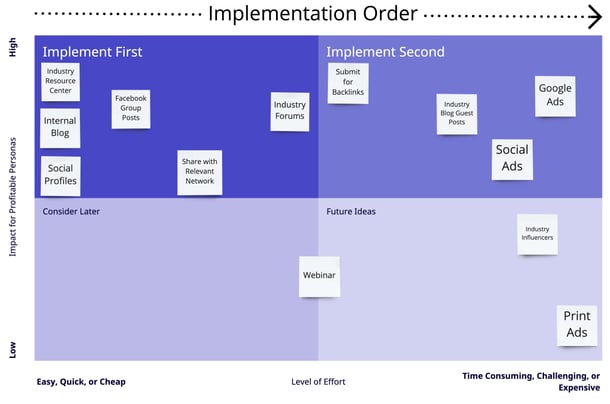
8. Goal Setting
Next, consider your goals for this campaign. Metrics to consider while developing your goal might include:
- Number of downloads
- Number of marketing qualified leads (MQLs) generated
- Number of opportunities created
- Amount of revenue generated
Pro-Tip: Calculate the projected return on investment (ROI) of your content offers and track progress to goal. This can help you get more funding for advertising and content generation. Showing that you have a vision helps your team (and your budget holders!) support you in achieving it.
How to Calculate ROI for Marketing Campaigns
ROI = ((Sales Growth - Average Sales Growth - Marketing Cost)/Marketing Cost)*100
For example, let's imagine that you spend $1,000 on Google Ads, $500 on graphic design, and $1,500 in internal resource costs to produce the conversion path, and the new revenue for that month is $5,000. On average, your monthly sales growth is 10%.
ROI = (($5,000-$500-$3,000)/$3,000)*100
So, your campaign achieved 50% ROI.
9. Monitor and Adjust
Once your campaign is live and you've executed your distribution strategy, monitor its performance to determine if any adjustments need to be made.
If your performance is below goal, consider going back to your distribution strategy and making plans to implement additional distribution channels.
Share this
- April 2025 (1)
- March 2025 (1)
- January 2025 (3)
- December 2024 (2)
- September 2024 (2)
- August 2024 (2)
- July 2024 (3)
- June 2024 (1)
- May 2024 (1)
- February 2024 (1)
- January 2024 (1)
- December 2023 (1)
- November 2023 (1)
- October 2023 (5)
- September 2023 (2)
- June 2023 (1)
- April 2023 (2)
- March 2023 (2)
- February 2023 (5)
- January 2023 (8)
- December 2022 (7)
- November 2022 (10)
- October 2022 (2)
- September 2022 (11)
- August 2022 (4)
- July 2022 (2)
- June 2022 (3)
- May 2022 (8)
- April 2022 (6)
- March 2022 (4)
- February 2022 (4)
- January 2022 (6)
- December 2021 (4)
- November 2021 (4)
- October 2021 (4)
- August 2021 (1)
- July 2021 (7)
- June 2021 (15)
- May 2021 (1)
- March 2021 (2)

